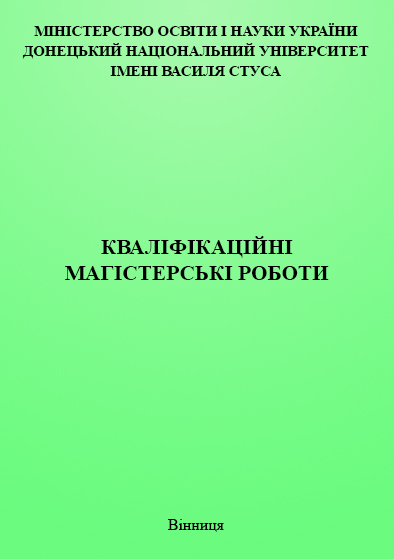Comparative characteristics of word-formation nests and phraseological units with a movement component: ходити, іти in Ukrainian, to go, to walk in English and zu gehen, zu spazieren in German.
Keywords:
word-formative nest; word-formative meaning; derivative; root words; phraseological unit; phraseologismsAbstract
The Master's research paper is devoted to the study of the structural and semantic features of word-formation nests and phraseological units (hereinafter – PU) of the verbs ходити, іти in Ukrainian, to go, to walk in English and zu gehen, zu spazieren in German.
The material for the research was a set of derivative words from the verbs ходити (Ukrainian), to go, to walk (English), zu gehen, zu spazieren (German), which consists of 830 lexical units, including 530 Ukrainian lexemes, 145 English and 155 German; and 390 phraseologisms with the movement component ходити, to go, to walk and zu gehen - 127 Ukrainian units, 145 English units and 118 German units.
The analysis of the studied units showed that, in terms of quantitative composition, the derivatives of the Ukrainian language prevail over the number of derivatives in the English and German languages – 530 (63.9%), 145 (17.4%) and 155 (18.7%), respectively. This difference is caused primarily by a wide variety of word-formation methods of forming derivatives in the Ukrainian language.
Nouns make up the largest group among other parts of speech simultaneously in Ukrainian and English – almost a half: Ukrainian – 47.2%, English – 46.9%, in contrast to German, where the largest group are verbs. – 94 (or 60.6%). This is the only common feature in a quantitative aspect for the Ukrainian and English languages. When classifying the word-formative meanings of the derivatives of each part of speech, the verbs are distinguished by the greatest variety – a total of 142 word-formative meanings.
The phraseological units of the three languages were classified into phraseological fusions, phraseological unities and phraseological combinations. It was found that in the Ukrainian language with the components of ходити and іти, phraseological unities – semantically indivisible phraseological units, the integral meaning of which is motivated by the meaning of the components, – prevail. In the English language, there are more phraseological fusions, which are absolutely indivisible and have a figurative meaning, and phraseological combinations, which consist of words with free and phraseologically related direct meaning. When analyzing the PU of the German language, it was found that they are organized by all three types of classification.
According to another classification, based on the correspondence of the syntactic functions of PU and parts of speech, it was found that there is the largest number of verbal PU in all three languages. The reason for this result is that verbs and their derivatives are analyzed in the work.

